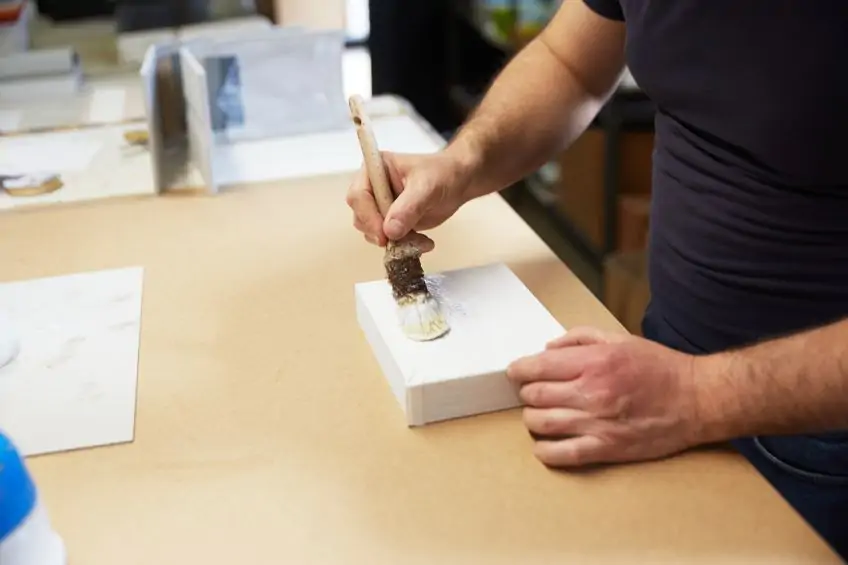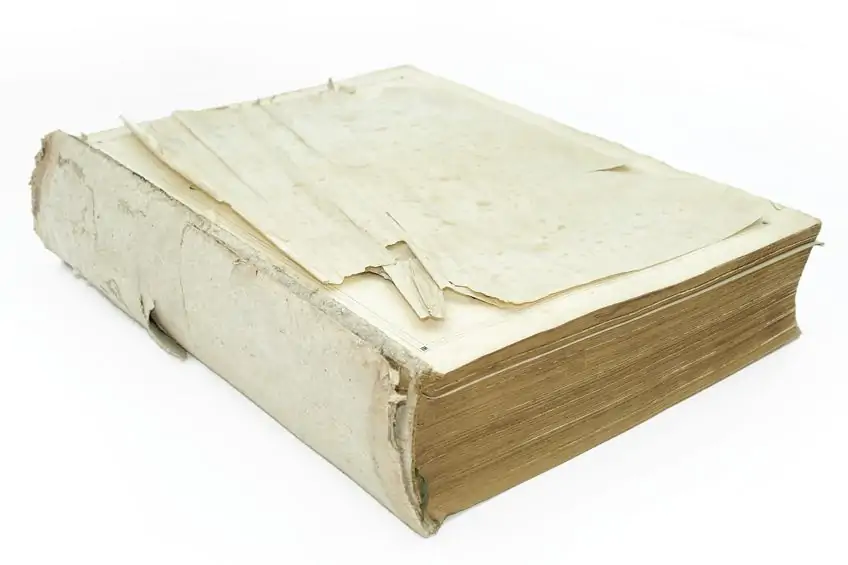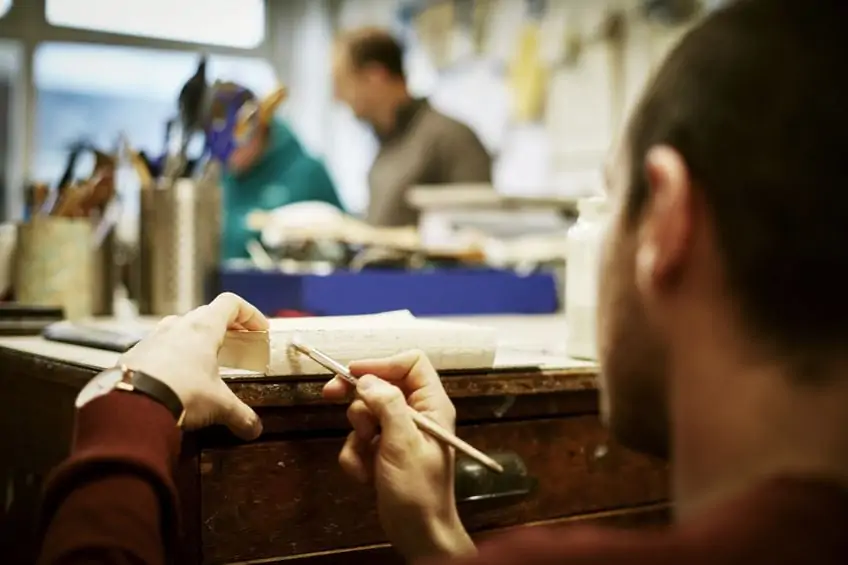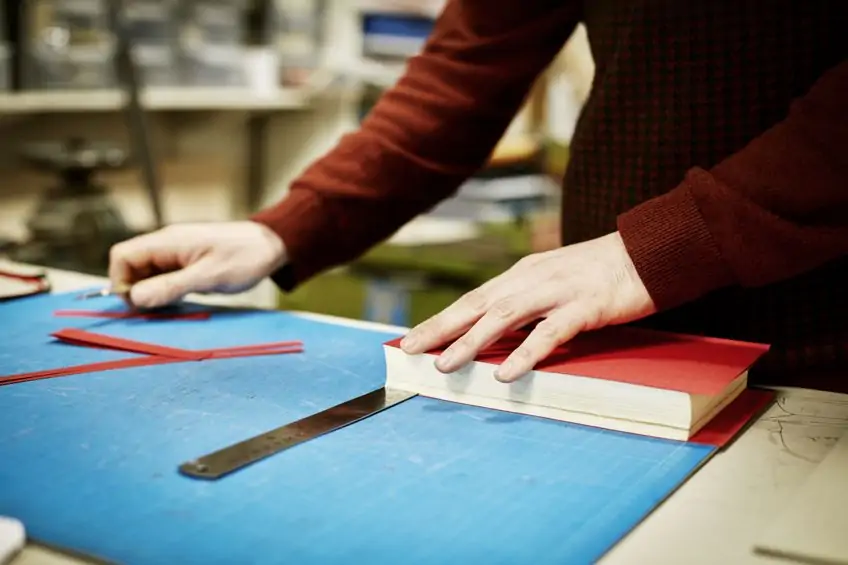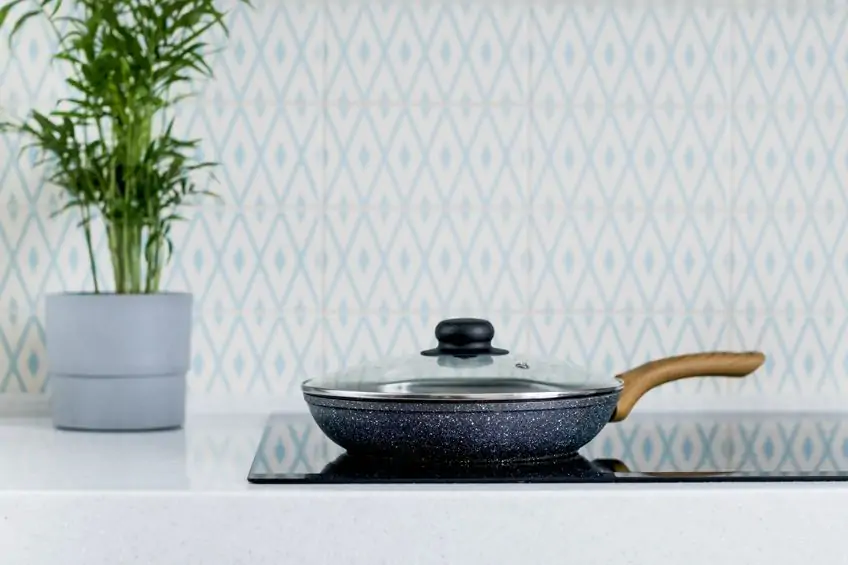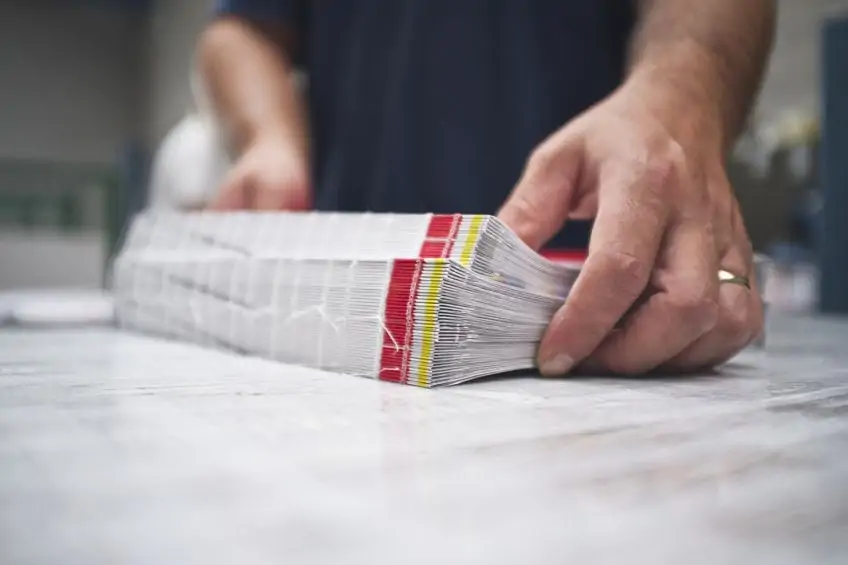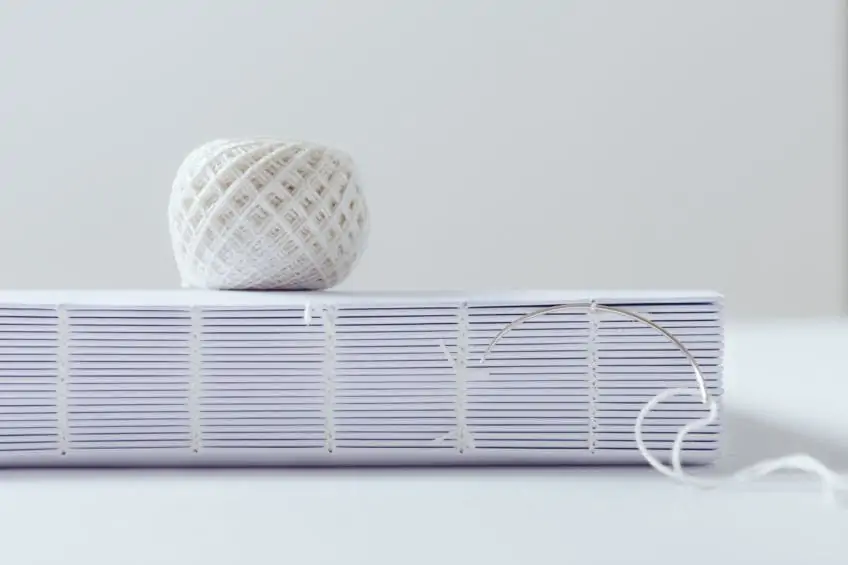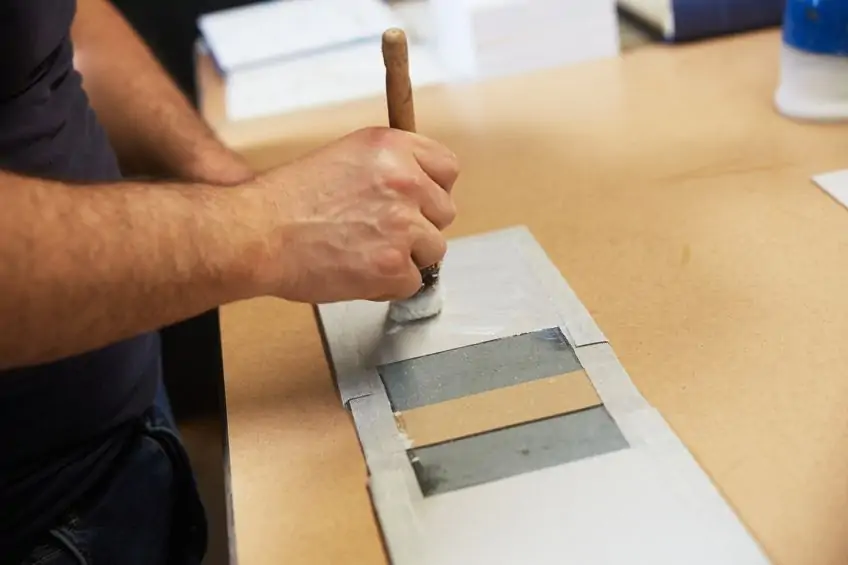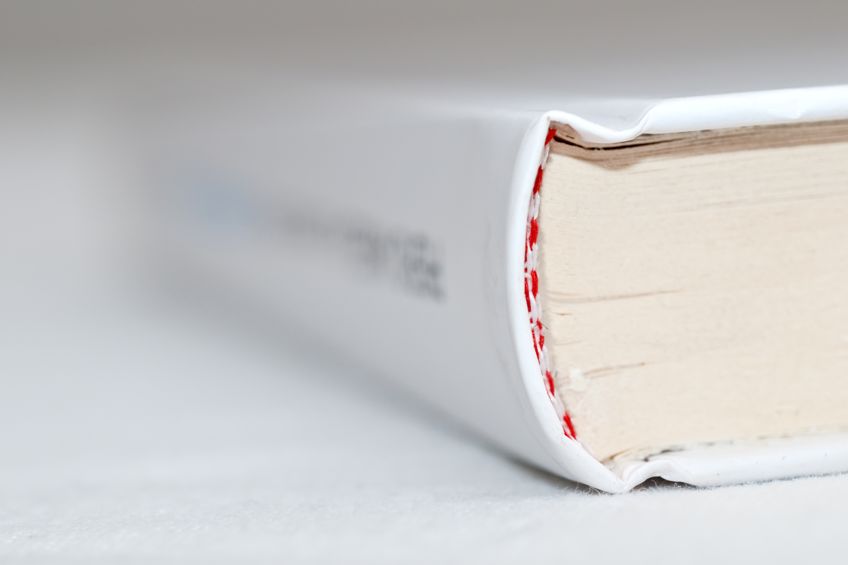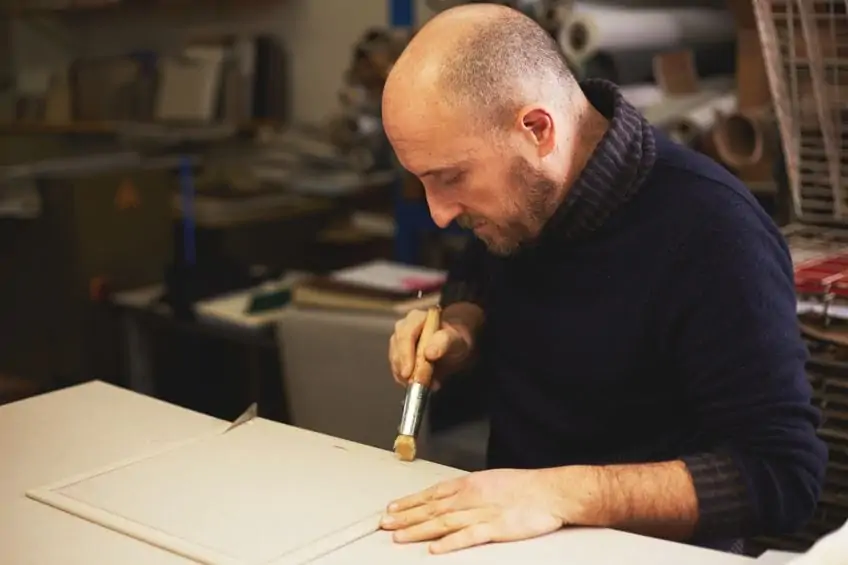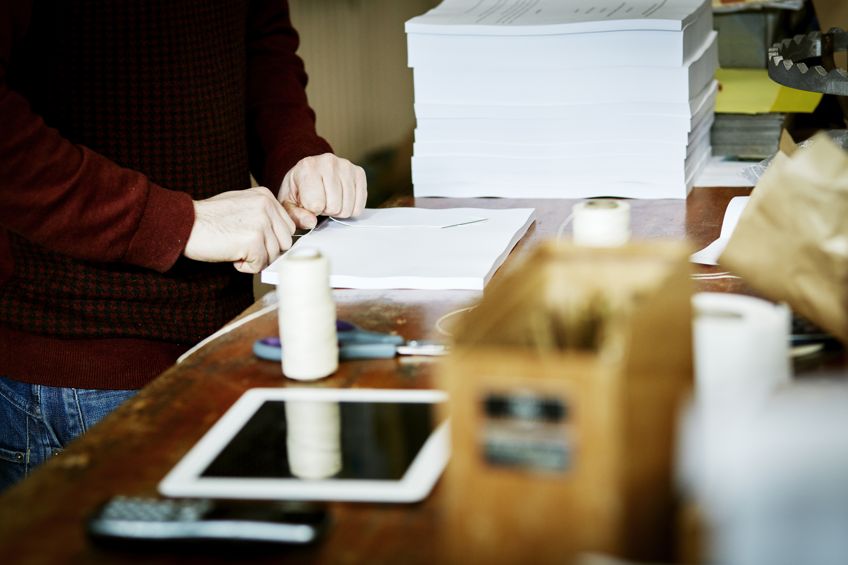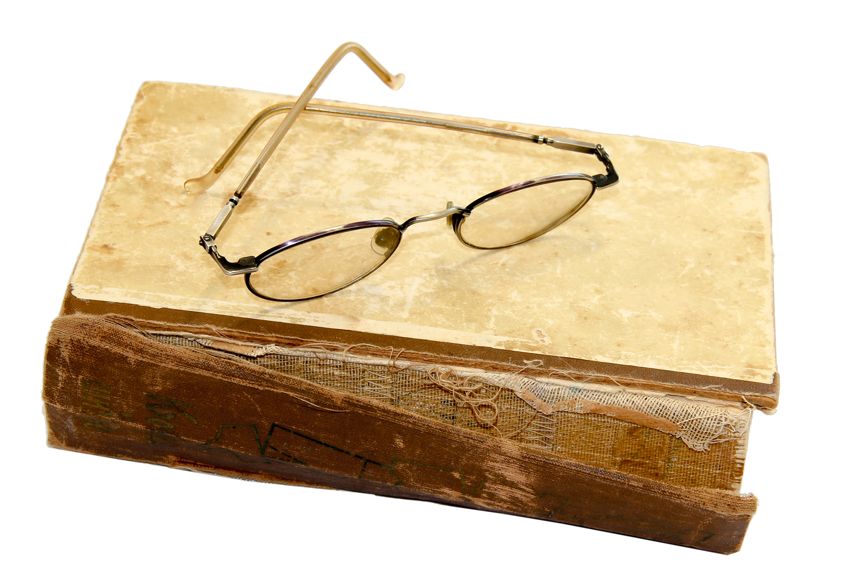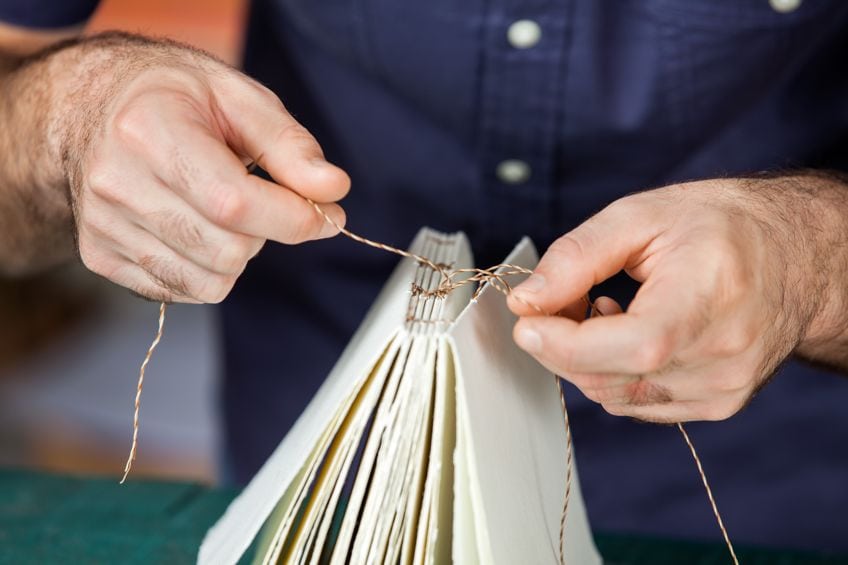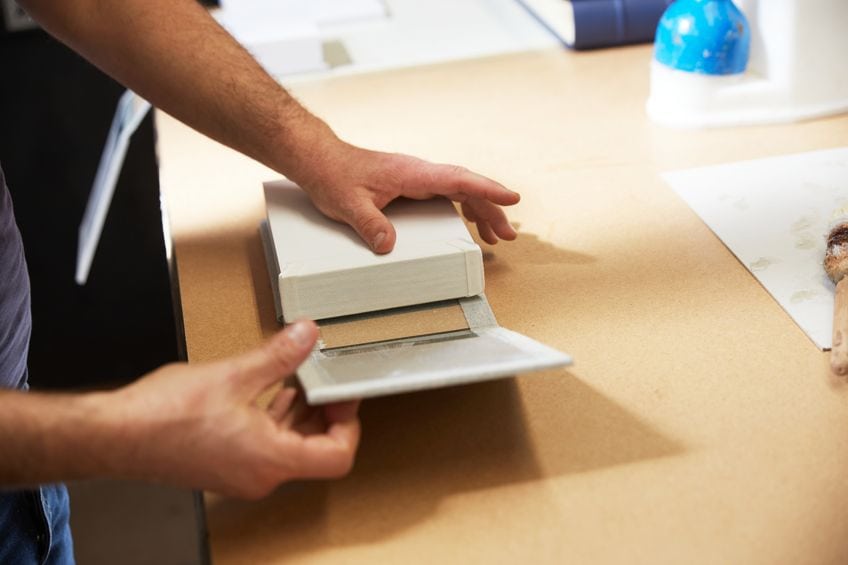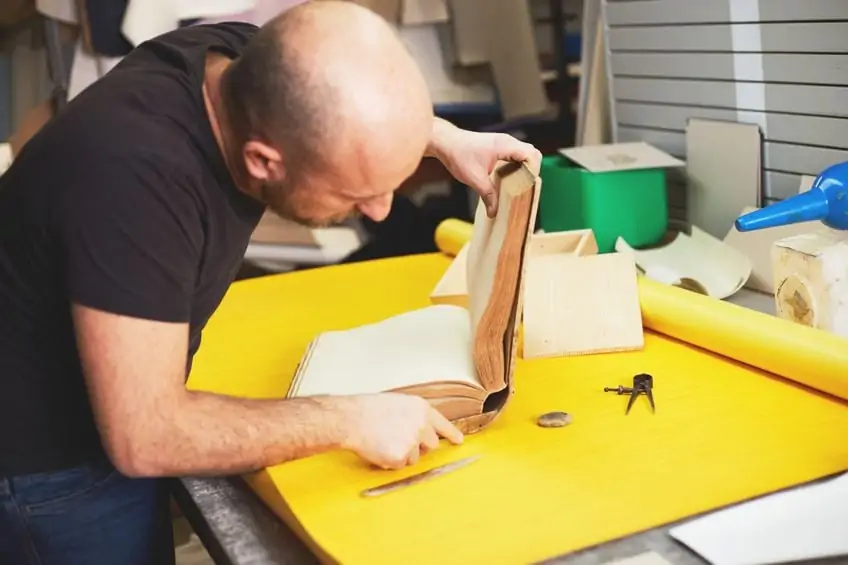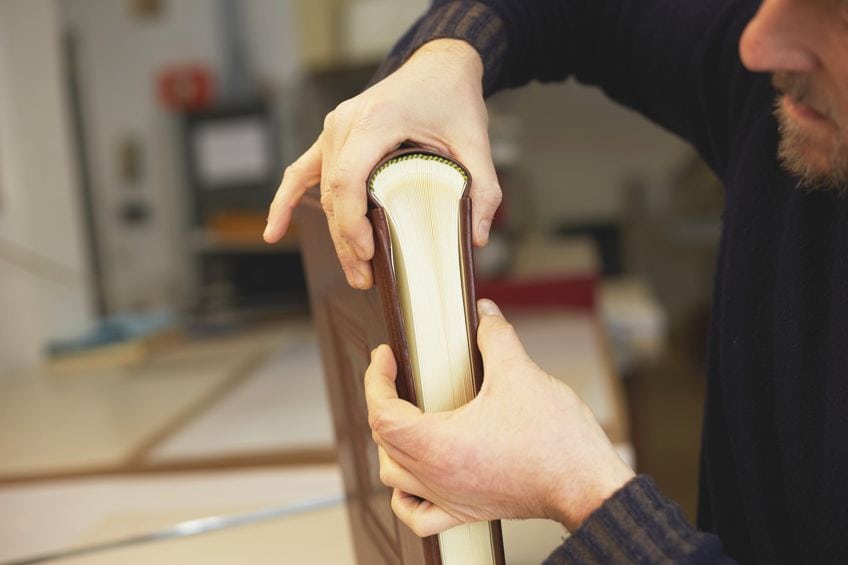Best Glue for Bookbinding – The Top Brands of Book Binding Glue
This post may contain affiliate links. We may earn a small commission from purchases made through them, at no additional cost to you. You help to support resin-expert.com
When considering the aspect of bookbinding, we might think that this is a job that only professional bookbinders can do. This is not true, as you can bind your very own books if you have the right glue for the job. Every book you handle is held together with some type of glue, so if you have a book that has some loose pages or if you just want to make your own notebook, you should get the best glue for bookbinding that will be perfect for your particular project. In this article, we will be guiding you through the entire process to help you choose and use the best bookbinding glue.
Table of Contents
Exploring the Different Types of Bookbinding Glue
The different types of glue that you can use for bookbinding are many, however, you need to find the right type of bookbinder glue that works to hold your book together, yet allowing it to still be flexible enough to open and close without difficulty. Even the bookbinding specialists understand the importance of finding a glue that works and will not in any way damage your book.
Bookbinding repair glue is a product that has been used for over 2000 years, and in those times, the only glue that was used was animal glue. As the name implies, the glue was formed from the collagen that comes from an animal product. Today, this type of process is frowned upon, especially for the inhumane treatment that the animals were subjected to. However, this type of glue is still used today, but only when old antique books need to be restored, as the outcome must be identical to the old glue used in the past.
Today, the glue used for bookbinding is a synthetic glue that is flexible, more durable, and, of course, is better than the old animal glues of the past. The glue products today are also stronger, the glue dries quickly and becomes clear, is a lot cheaper, and will not damage the paper. Below are a few different types of glue you can use.
Polyvinyl Acetate (PVA) Glue
For bookbinding or repairing books, the best glue for bookbinding is good PVA glue, not only is it very effective, but it can also be found in any craft or art supply store. The PVA glue is also very flexible and strong, two qualities that you are looking for in good bookbinding repair glue; it is also durable and cheap and will not damage your paper. The paper in your books is very delicate, and using PVA glue for repairs will not damage the paper or cause it to yellow over time. This is because the glue is PH neutral, acid-free, and is also ideal for repairs to the spine of the book. PVA glues are permanent, and the bond cannot be reversed after the glue has dried.
If you are using household or craft PVA glue, you may require a bit of water to dilute it slightly. Also, you need to check the label to ensure it is acid-free, PH-neutral, and non-toxic. What are some of the common or household PVA glues that are available for bookbinding use?
- PVA glue sticks, but these are not suitable for repairing the spine of the book
- Most of the wood glues, however, some of them do not dry clear
- All white PVA school glues
The only problem with the PVA glue is that it has a slow drying time, which means that you need to clamp the pages together and wait for a while, allowing the glue time to dry properly. You might also need to apply a second layer of glue to the book block before you attach the cover.
Below are a few interesting facts about PVA glue.
- They need pressure to be able to adhere properly
- Only works on porous surfaces
- PVA glues are water-based, so it is very easy to clean up afterward using some soapy water
- These glues are not waterproof
- Provides a better bond at room temperature
Two-Part Epoxy
The two-part epoxy comes in two separate containers, the one contains the hardener and the other contains the resin. When mixed, a chemical reaction takes place and the epoxy cures. The usual ratio for mixing is 1:1, and some of the brands include a syringe that dispels the exact amount of each component, making it very simple to apply with no wastage of the product.
The two-part epoxy forms a very strong and durable bond, it sets clear, is very flexible, and forms a permanent bond that is also water-proof. In comparison with the PVA glue, this glue sets within five minutes. This quick setting time makes it very easy to use, with no long waiting time for the glue to set, and it also fills up all the gaps. This product is very versatile and can be used on surfaces like aluminum, glass, paper, wood, plastics, ceramics, metal, tiles, and much more.
After it has set, no dust particles or other matter can settle on it, leaving it spotless after drying.
Contact Cement
Contact cement is a very versatile, strong, and flexible glue due to the high quality of chemicals that are used in its manufacture, and you can get it at any craft or hardware store. This is a very versatile glue as it can be used not only for bookbinding but for gluing plastic, wood, and rubber. One disadvantage with using this glue is that it has a very strong smell, due to the chemicals and can be detrimental to your health, so we recommend that you use it in a well-ventilated area or outside.
Wheat Paste
People have been using wheat paste for binding paper for over three hundred years. This glue is used for boards, and leather, and has been the main type of glue used for bookbinding and book restoration worldwide. The wheat paste is a popular choice for pasting flyers on billboards and buildings. Many bookbinders add some wheat paste to their PVA glue to increase its strength, or to the methylcellulose to delay the setting time, particularly when working on very large projects. Here are some of the reasons why it is so popular:
- Versatile
- Reversibility
- Ease of use
- High adhesive properties
- Toxic-free
- Cheap
- Archival stability
How to Make Wheat Paste
So, where do you get wheat paste? This glue is very easy and simple to make, and there are many different recipes, but all of them contain flour and water.
You only need to make the amount you are going to use, as it will only last for two to four days.
To get started, below are a few things you will need.
- Five parts of distilled water
- One part of acid-free cake flour
- Whisk or fork
- Non-stick and non-metallic pan
If you are going to use wheat paste for your books, then we recommend that you do not use bread or cake flour as they all contain high levels of gluten, which may attract insects that can destroy the paper.
We recommend that you use cake or pastry flour that has a low level of gluten. Follow these directions carefully.
- Add 1/3 of the distilled water to the pan, then add the cake flour and mix them using the fork or the whisk.
- Continue mixing until all the lumps are gone, and then slowly add the rest of the distilled water. Keep mixing the ingredients until it is like a paste and looks similar to milk.
- Now place the pan on the stove and heat the mixture until it comes to a boil, make sure to use medium heat.
- As soon as it comes to a boil, mix it again and reduce the heat to a low setting and allow the mixture to simmer for about 30 to 90 seconds or until the mixture is like a thick paste.
- Remove from the stove and stir it one more time, then set it aside to cool.
- If you notice there are still some lumps in the mixture, return it to the heat and stir, make sure you do this while the mixture is still hot.
- Once the mixture has cooled down properly, you should have your semi-translucent wheat flour paste ready for use on your books.
Methyl Cellulose
Methyl Cellulose is non-toxic, has a neutral PH level, is a non-digestible chemical compound that also dries clear, and is made from cellulose plant fibers. The substance will provide a very flexible bond to your book, and is used mainly for gluing silk to board or paper, as well as restoring old books. Since it is not affected by severe temperatures and is reversible, it is ideal for use when restoring old archival books and documents.
Although it can withstand high temperatures, it is not suitable when used in high humidity conditions.
It is also not as strong as the PVA glue and has very limited availability. The substance normally comes in a white granular powder form that you can mix with water, and when mixed with PVA glue, it helps to extend its drying time without the possibility of reducing its strength.
Super Glue
Can you make use of superglue as a bookbinding repair glue? It is not recommended to use super glue on your books, as it is hard drying glue and will become brittle when dry causing major cracks and rendering your repairs fruitless. The liquid super glue may also soak into the paper, which could cause the pages to stick together and result in damage to your book.
The superglue may hold for a short time, but will eventually come loose because when you open and close the book covers, as well as the pages. In time, this movement will result in the glue cracking and breaking away from the paper. It is recommended that you use flexible glue instead to avoid these types of problems.
Factors to Consider When Purchasing Book Binding Repair Glue
When you want to restore or repair your books, you need to take extra care not to cause any further damage, and the correct adhesive is important for the job. If you are new to the art of bookbinding, you need to understand that not all glues are the same, some adhesives are specially designed for bookbinding, while others may cause further damage.
So, we have listed a few things to look out for.
Toxicity
There are many types of glue on the market that contain toxic chemicals, and you need to ensure you buy non-toxic glue, as it is better for you as the user as well as for the environment. If you have toxic glue and you want to use it, then please use a respirator, or work outside, but we do strongly advise against using such a type of glue.
Strength
When it comes to bookbinding, the strength of the glue is very important. All glues come in varying strengths, some are heavy-duty, others are medium-duty, light-duty, school-grade, industrial-grade, permanent, and craft-grade.
You need to consider medium or heavy-grade glue for your bookbinding as the glue must support the whole weight of the book.
Color of the Glue
To avoid any stains on your pages or cover, we recommend that you buy glue that dries clear or transparent because you do not want to leave any visible marks on your book. Most of the glues dry with a clear, yellow, or white color, and although the color does not affect the performance of the glue, the finish is not appealing and can make your project look amateurish.
Versatility
Glues have certain properties, some glues are best suited for paperback books, while others are for hardcover books. Other glues are suited for paper only, whereas other glues are suitable for covers and spines of the book.
So, when buying your glue, you need to make sure you buy glue that is versatile and can be used for the whole book.
Acidity
Buying an acid-free or PH-neutral glue is vital when doing bookbinding to avoid any yellowing of the paper, or even destroying the spine of the book completely. Using acid-free glue will prevent any damage to your paper or your cover, and if you can buy glue that is also water and UV-resistant, even better.
Flexibility
You do not only want a strong bond with your bookbinding, but the bond also needs to be flexible when it is dry, which will allow the book to be opened and closed without any tearing, resistance, or wrinkling.
This is the reason we do not recommend the use of superglue for bookbinding, as it sets hard and rigid and will crack after opening and closing the book a few times, causing the book to fall apart.
Our Recommendations for the Best Glue for Bookbinding
Bookbinding is an old tradition, people have been doing it for many years until recently. The onset of the digital age has profoundly affected how people read and communicate. However, the art is not completely lost, and many still love the feel of a real book and the tradition carries on. So, if you have a book that needs repairing, and you need a good book glue, then the few recommendations below might prove helpful.
Best PVA Book Binding Glue: LINECO PH Neutral Adhesive
The PH Neutral Adhesive is one of the best glues on the market for bookbinding, as it is acid-free with a neutral PH level which is a vital characteristic for keeping your paper in good condition. PH Neutral Adhesive is made from archival polyvinyl acetate, it is free of all solvents, and is also water-soluble with a lay-flat property, and will not yellow over time.
- Professional quality archival adhesive can be thinned with water
- Dries clearly and quickly, is non-yellowing, and remains flexible
- Ideal for bookbinding and paper projects
This glue dries fairly fast and is fully cured within 48 hours, and if you need to increase the drying time, all you do is add some water. The glue can be used on any type of paper, is transparent when dry, and is also reversible. The glue gives you a flexible bond, allowing you to use the book within three to four hours. The glue forms a water-proof bond, ensuring durability.
PROS
- Easy to use
- Best book glue
- Bond is permanent
- Bond can be reversed by soaking in some water
- Acid-free, causing no damage to the paper
- Water-soluble
- Fairly fast drying
- Dries clear
- Non-yellowing
CONS
- Fairly expensive
- The cap of the bottle may leak and cause the glue to dry out
Best Two-Part Epoxy Book Glue: GORILLA 2-Part Epoxy
We are all familiar with the brand Gorilla, and the Gorilla 2-Part Epoxy is an excellent bookbinding glue and has had amazing reviews on Amazon. The glue consists of two barrels, one contains the hardener and the other the resin, and each barrel has its very own syringe. The syringes dispel the same amount of contents together, making it very easy to mix and then apply, leaving you with no waste.
- Strong, permanent, fast, and gap-filling glue for multiple surfaces
- Creates a durable bond that is solvent resistant and clear
- Easily to use and quickly sets in only 6 minutes
The glue sets within five minutes, allowing you sufficient time to align your paper or to correct any error you may have made. The glue will not leave any residue on your paper after it is dry, and it sets clear with a permanent and durable strong bond that is water-resistant. This glue is also very versatile, not only for use on paper and board, but can be used on surfaces like glass, metal, plastic, wood, ceramics, and much more.
PROS
- Fast drying time, sets within five minutes
- Dispels the same amount from both barrels at the same time
- Excellent for bookbinding
- No residue on the paper after drying
- Dries clear
- Provides a durable and strong bond
- Is water-resistant
- The glue is very versatile and can be used on several different surfaces
CONS
- For first time users, you might find it difficult to control the right amount of glue that is dispensed
Best Paper and Craft Book Binding Glue: ELMER’S Craft Bond Fabric and Paper Glue
The Elmer’s Craft Bond Paper Glue can be used for bookbinding, as it is acid-free and will give your paper the protection it needs. It dries clear and is also very flexible after drying, allowing you to open and close your book without the fear of the glue cracking or breaking away. The glue also provides you with a permanent and strong bond. The glue comes with a precise applicator tip that helps with applying the correct amount of glue you need without messing. The glue dries fast and will not leave any residue on your paper once it has dried.
- Suitable for a range of arts and crafts projects
- Adheres strongly to both paper and fabric surfaces
- The glue dries clear and is resistant to water and washing
The book glue is thick and tacky and is recommended more for repairs to the book covers and spine than for the pages. When it dries, it is also waterproof. Elmer’s craft glue is suitable for fabric as well as paper, which makes it ideal to use when you make use of muslin cloth or open weave fabric for your bookbinding and repairs. The glue is also a very versatile product that can be used for bookbinding and any other type of paper repair.
PROS
- The glue is safe to use and will not damage your skin
- Reasonably priced
- Waterproof
- Acid-free
- Clear drying
- Very flexible after drying
- Gives a permanent strong bond
- Easy to use with no mess applicator
CONS
- The glue may give off an offensive odor that is annoying to some users
Types of Glue That Work for Bookbinding
Many things around the home need to be repaired at some time or another and more often than not we are found using the same bottle of glue for all of those jobs and we expect the desired results.
However, there are certain types of bookbinders glues that are only suitable for certain types of materials, so to assist you in this matter we have drawn up a chart for you to give you some idea of what type of glue is best to use when you are repairing your books.
| For Bookbinding | General Purpose | |
| PVA Glue | ✔ | ✘ |
| Super Glue | ✘ | ✔ |
| Two-Part Epoxy | ✔ | ✔ |
| Wheat Paste | ✔ | ✘ |
| Methyl Cellulose | ✔ | ✘ |
| White or Yellow Wood Glue | ✔ | ✘ |
| Fabric Glue | ✘ | ✘ |
| Hot Glue | ✔ | ✔ |
| Polyurethane Glue | ✘ | ✔ |
| Glue Sticks | ✘ | ✘ |
Tutorial: How to Fix a Book Using Bookbinding Glue
By using bookbinding repair glue, you will be able to fix your favorite book that seems to be falling apart. This situation can be the result of pages coming loose from the book, space developing between the cover and the bulk of the book, or the spine of the book coming away from the bulk of the book. A detailed tutorial covering all of these issues will follow.
Reattaching Loose Pages
The very first thing you need to do is to buy some acid-free bookbinding glue. Make sure it is acid-free for the protection of the spine of the book and the paper, which you can find at any hobby or craft store. You will also need a knitting needle or popsicle stick, some heavy books, and three strong rubber bands. Next, you need to carefully remove the loose pages and set them to one side, somewhere where they cannot come into contact with any glue. You also need to make sure they are kept together in the right order to avoid gluing pages back into the book that is not in order.
Now you can apply a thin layer of acid-free bookbinding glue. Open your book and apply the glue on the inside of the spine at the place where the pages came loose. For this, you can use the knitting needle or popsicle stick, making sure you apply the glue evenly on the spine.
Glue the loose pages back onto the spine, making sure they are still in the right order. Now you need to line up the pages on the top and bottom, ensuring they are in line with the other pages in your book. Then press the pages firmly down onto the spine, you might have to adjust them slightly, bringing them into line with the other pages, but be careful as the glue will begin to dry and you need to work quickly.
Next, you can close your book and use the rubber bands to hold the book closed, this will keep the pages in place until the glue dries. You can also put some of the heavier books on top of the book you are repairing to assist in the gluing process. Leave the book like this for around 24 hours, and then you can remove the heavier books and the rubber bands. You can then open the books to check that the pages are firmly fixed. If you find some of the pages are not properly secured, then you can repeat the gluing process.
Tightening the Gap Between the Spine and the Pages
Again, you need to buy some acid-free glue; you will also need knitting needles, wax paper, and a small sheet of plastic. Preferably have the glue in a tall bottle, where you will be able to cover the knitting needles with the glue before applying it to the spine. Stand the book upright on its tail and very gently, using your finger, open the gap that is between the spine and the pages, taking care not to damage the book in any way.
Next, put the knitting needle into the bottle of glue until it has been coated with the glue, then insert the knitting needle into the gap between the spine and the pages, making sure you apply glue to both the pages and the spine.
If the gap is found to be all along the spine, then you must flip the book onto its head and follow the gluing process again. You can then lay the book flat and press the pages firmly against the spine. Then using the flat piece of plastic, press the endpaper, that is the blank pages that are at the front of the book, firmly into the spine. This will ensure that every page sticks to the spine and there is no tearing. Take the piece of wax paper and insert it between the cover and the pages, trying to get the pages as far into the spine as possible.
This process prevents the glue from seeping through onto the cover and will also ensure you can open the book properly once the glue is dry. Then take the piece of plastic, and with even pressure, run it along the hinge, which is the indent between the edge of the spine and the book’s cover. Place a piece of the hard solid wood board on a table and lay a knitting needle that is slightly thicker than the cover of the book, down on the board.
Place the book onto the knitting needle, making sure the hinge of the book is lined up properly, and then repeat this process with a second knitting needle, placing it onto the top hinge of the book. Now place some heavy books onto the top of your repaired book, and leave overnight.
How to Repair a Book Spine
This repair process needs to be followed if the hinge of the book is broken or torn. The first step is to remove the hinge completely from the book, as it is a lot easier to repair than if the hinge is left hanging on a thread to the book. Take scissors and trim off any loose threads or paper from the spine. For this process, you will need some acid-free glue, single-stitched binder tape, a brush, some wax paper, and two large rubber bands.
Cut two pieces of binder tape that measures the exact height of the pages, and not the height of the cover as it will leave you with too much tape. Use the brush and apply glue evenly to half of the one side of both pieces of the tape, then attach one piece of tape to the first page of the text block and the other to the spine of the book. Make sure you are holding the tape on the section that has no glue applied, and use the flat plastic to smooth the binding tape securely to the book.
You need to allow the glue enough time to dry, which could be a few hours up to 12 hours to dry properly. To make sure the glue is dry, run your finger lightly over the top of the tape, you should be able to feel whether it is still wet.
Take some wax paper that has been cut to the width of the spine and put it over the binder tape that you have already stuck to the book, and underneath the binder tape that still needs to be attached to the spine. Now apply some adhesive to the dry section of the two pieces of binder tape you have already attached, and bring the cover of the book up so that it fits into the seam of the binder tape. Make sure the cover is parallel with the spine and press it against the tab, you will know if you have done it right when you lift the cover, and the spine should then still lay flat against the binder tape.
You can now attach the last two pieces of binder tape to the spine and the text block, using the same process as described above, making sure the tape is stuck firmly to the spine. Take the rubber bands and fit them around the book and leave it overnight for the glue to dry, this will ensure that the glue will dry evenly and that the binder tape lies flat against the spine and the text block. Now you can remove the rubber bands as well as the wax paper and open the book to allow it to adjust to the repairs. If you find some of the pages are not even, you can take sandpaper to even smooth it out.
To sum up, the best glue for bookbinding is ordinary household or school glue, which can be very effective for bookbinding and other craft projects. However, if you want the book you are binding to last a long time, you must use acid-free, water-soluble, and PH-neutral glue. Also, it all depends on what type of project you are busy working on, for thin paper, thinner glue is better, or if you are binding a book with leather, then thicker or contact cement is better to use. So, considering all the information and bookbinders glue mentioned above, there should be something that will work for you.
Frequently Asked Questions
Is Double-Sided Tape a Good Alternative for Binding Tape?
First, all double-sided tape is sticky on both sides, which is going to make it very difficult to work with. Also, it is not a very strong tape, and a book needs to have something strong enough to hold everything together.
Is There a Best Glue for Bookbinding?
PVA glue appears to be the best book glue, as it is non-toxic and acid-free. However, epoxy glue is also very popular for restoring books. You need to be sure that the glue you use is flexible enough and will not crack when the book is opened and closed multiple times.
Is Superglue Effective for Repairing Books?
Superglue is not suitable for bookbinding as it dries stiff, hard, and brittle and will crack the moment the book is opened. The glue you need to use must be flexible. Superglue has its place for many other repairs and applications and will prove to be very effective in these cases.
How Long Will Book Glue Take to Dry Properly?
This depends on the type or brand of glue you are using, as some of them dry within five minutes, while others can take up to 24 hours to dry. Always read the product directions on the container before you buy the glue.
Can I Use Fabric Glue to Repair a Book Spine?
Fabric glue is not recommended for this purpose, as many of the fabric glues are not suitable for paper and board, so we suggest you use craft glue instead.
What Brush Is Best for Applying Glue?
There is no preference for the type of brush you need to use, only make sure it is the right size with a soft bristle.


